
Between the bustling city of Lima and the Incan region of Cusco, there is so much to see that a brief trip can barely even scratch the surface. From floating islands to a historical, volcanic city to a desert oasis, the variety of terrain and cultures in such a small geographic area never ceased to amaze me.
If you’ve ever taken a bus tour across a country in South America, you probably understand that there will be some bumps along the way. Our Peru Hop bus tour was no exception, with all the ups and downs of a good adventure. Over eight days, we drove between seven destinations in Peru, beginning in Cusco and ending in Lima. To call it an “eventful” trip would be a monumental understatement.
Cusco: The Gateway to the Inca Empire
Cusco is the doorway to the Incan region of Peru and the perfect home base for some incredible experiences, such as hiking the Inca Trail to Machu Picchu or climbing a cliff face to sleep in a transparent suspended capsule at Skylodge Adventure Suites. The city of Cusco is so much more than just a starting point for other adventures though.
Once the capital city of the Inca Empire, Cusco has been designated a UNESCO World Heritage Site, and for good reason. Nestled in a lush valley along the Andean mountains, the city is surrounded by stunning scenery and seemingly endless opportunity for exploration.
Cusco is a place where history and culture, nature and adventure, and city life all merge, resulting in an amazingly unique and special place.
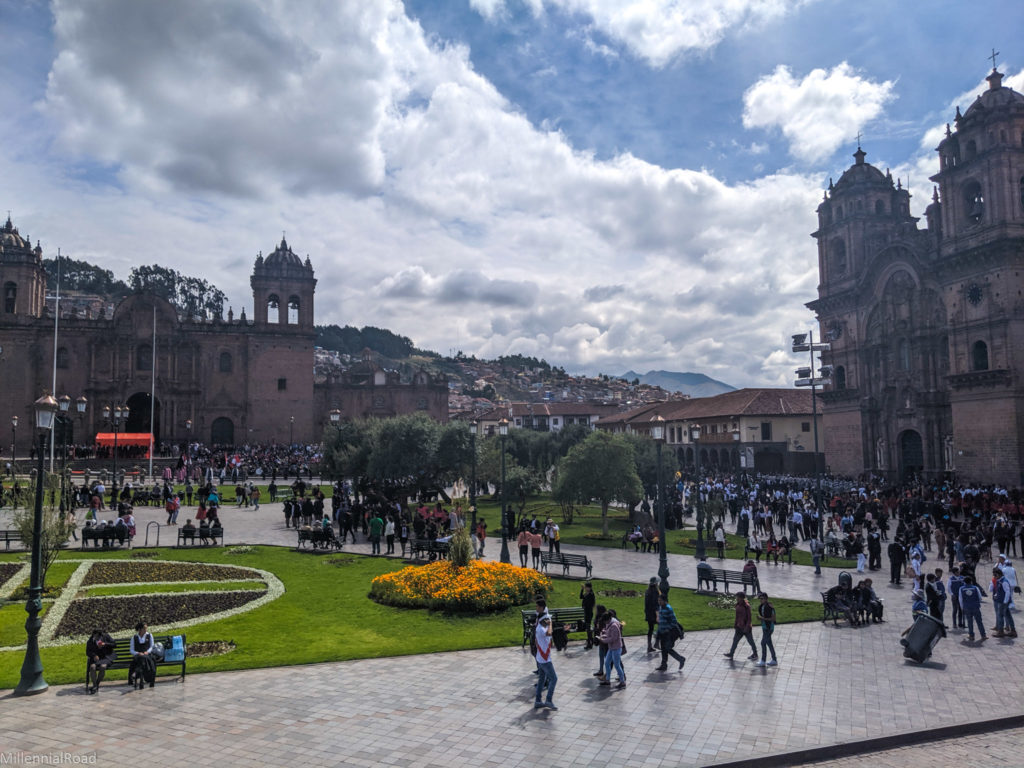
Anyone visiting will not want to miss the Plaza de Armas, which has a unique combination of colonial architecture and touristy restaurants and shops.
For the more adventurous travelers, I highly recommend you venture outside of that area for more authentic (and reasonably priced) food. A short walk down some charming cobblestone streets is all it takes to leave the tourist area and find street vendors serving typical dishes to lines of locals.
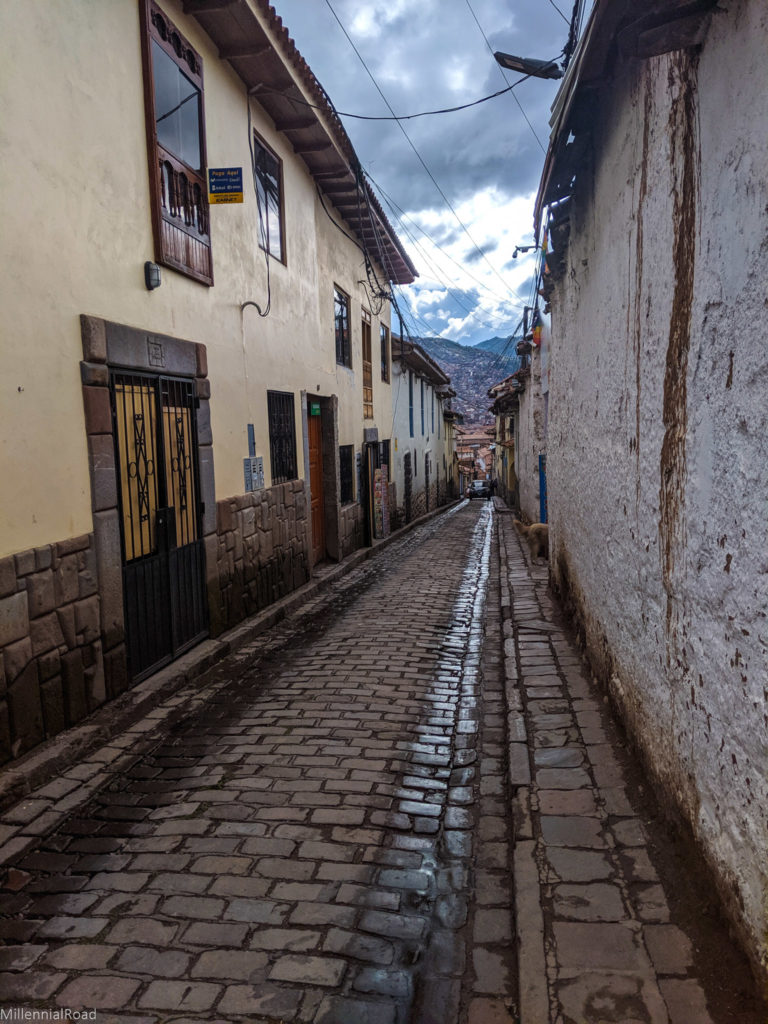
And if you’re a super adventurous eater when traveling, then fully embrace the culture and try guinea pig (or cuy) while you are in the region. This traditional Incan food is viewed as a delicacy by many Peruvians and often served whole on special occasions.

Puno: A bumpy beginning
The bus trip started a bit rocky, with two nights in a row of overnight rides. If you ever take a Peru Hop bus tour, trust me when I tell you to rush to the seats on the bottom of the bus if you can. You may at least get some sleep in these quieter, more spacious seats.
After our first overnight drive, our arrival in Puno at 5:00 in the morning came far too soon. Groggy and disoriented after little to no sleep, we were awoken to guides rushing us off the bus. Unsurprisingly, this is a recipe for disaster, especially for someone like me who does not handle lack of sleep very gracefully.
Although we would be returning to the same bus after our tour, we dropped our bags off at storage for safekeeping during the day. As I rubbed the final bits of sleep from my eyes, I had a shocking realization: I had left my laptop on the bus. I immediately contacted the company to let them know.
After several phone calls and more anxiety than I care to admit, my concerns waned as a company representative assured me that they found my laptop. It would be waiting for me when we returned from our tour. Thinking that we were lucky to have narrowly avoided that major mishap, we focused our energy on enjoying our time in this unique region of Peru.
To kick off the day, we visited the floating islands of the Uros people on Lake Titicaca. I was speechless when I realized that this tiny community constructed these floating islands entirely of totora reed, which is basically woven grass.
This is a foreign concept for most people, but imagine a small group of people essentially building their own islands by weaving a type of grass together and then living independently on these artificial islands. This feat is even more impressive than it sounds given that they have to consistently reconstruct the islands as the bottom layers gradually rot away.
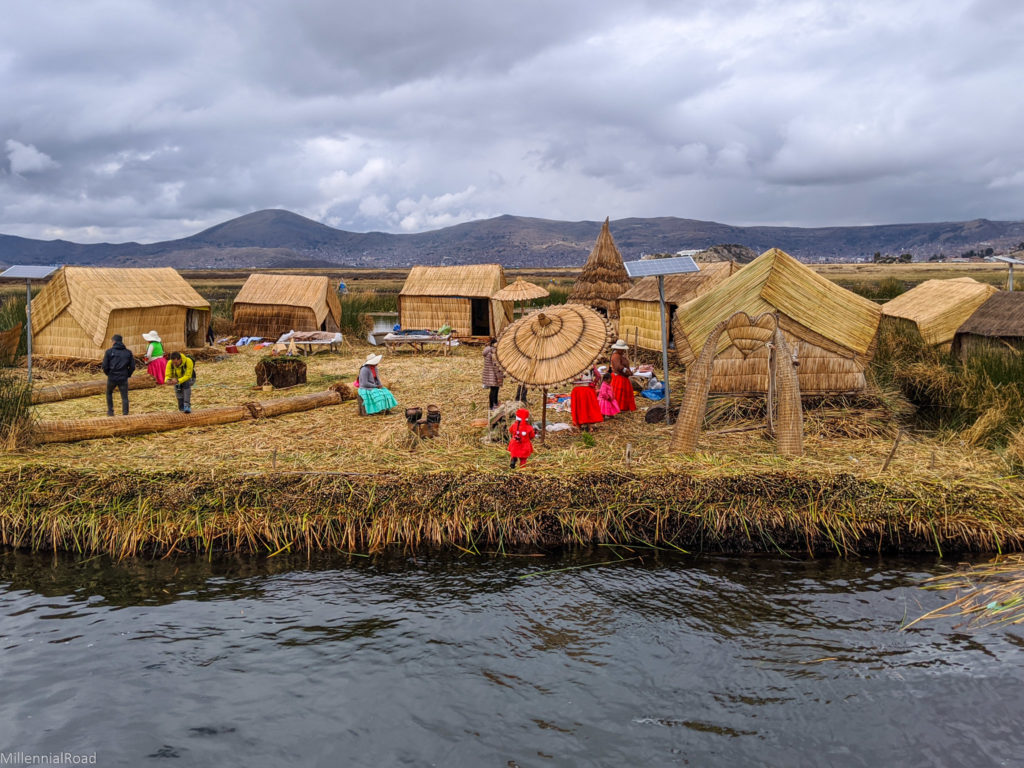
The first island we visited had four families and 20 people in total living on it. Each family had its own hut, which was functional but simple, both inside and out.
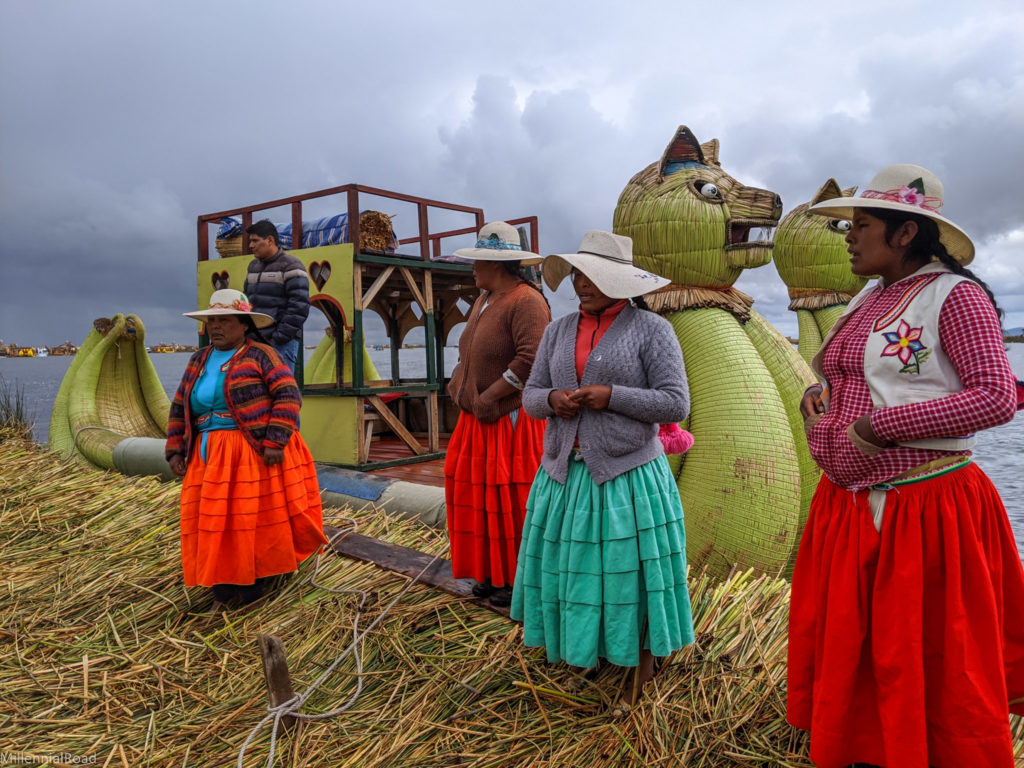
The “amenities” on the island were so basic that the families had to take a small boat to a different island each time they wanted to use the bathroom. That’s right—they didn’t even have a bathroom on their island.
Realities like this always create immense perspective for me, particularly after coming from the Skylodge Adventure Suites, where we had our own private bathroom in a transparent pod attached to a cliff face 400 meters above the ground.

We followed our visit to the Uros people with a stop at Taquile Island. A boat ride and short hike uphill led us to a remote village situated on the hillside overlooking Lake Titicaca.
The lives of these villagers seemed dramatically different than the Uros people. While still relatively small and simple, this community enjoyed the benefits of more developed land and infrastructure, including a school, a combined community center and market, and a few small shops.
With only a couple thousand residents, this island is far removed from modern society and maintains its traditional culture. Weaving and knitting are two of the main crafts of the island. Interestingly enough, women are responsible for the weaving, while knitting is the job of the men.
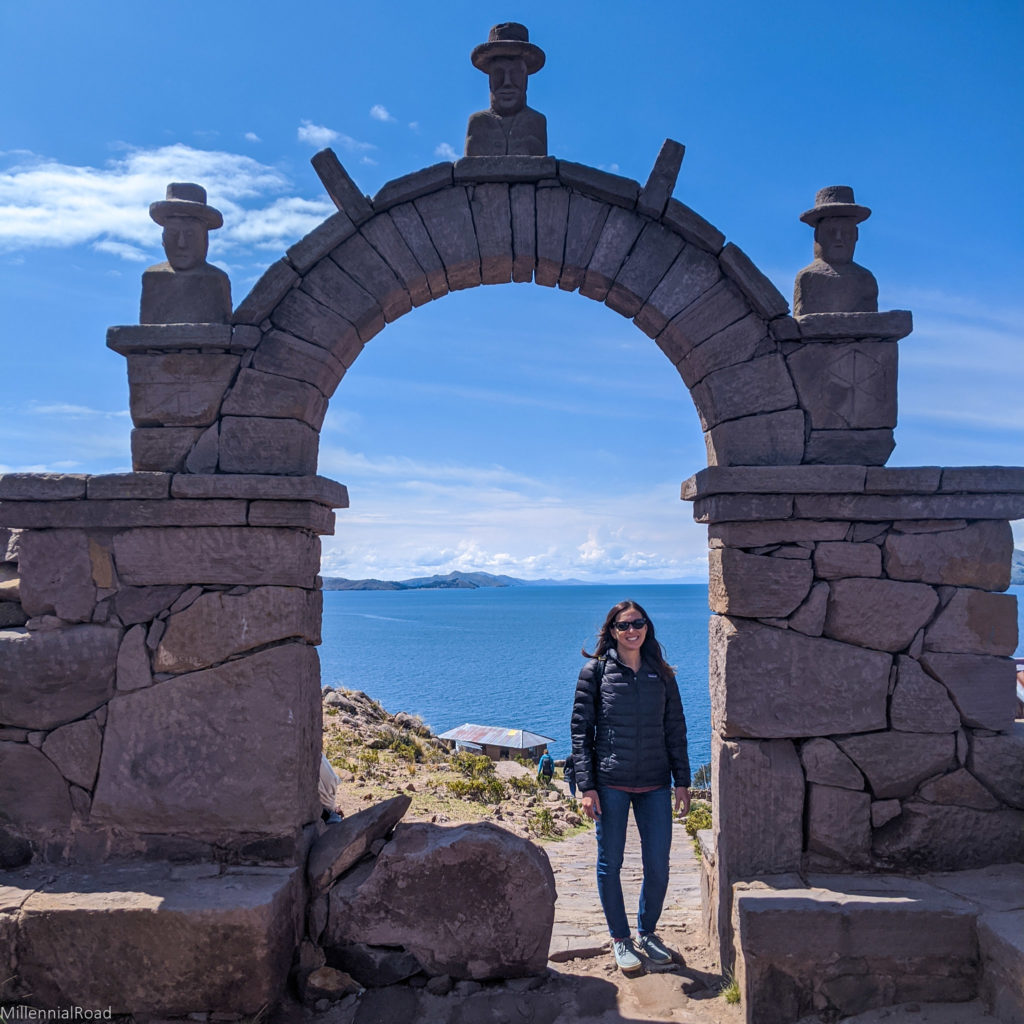
Sitting around a massive table on the cliff overlooking the lake, we were served a delicious, local lunch while learning about the everyday lives of these villagers.
Nick and I had the chance to join some of the locals in one of their typical dances. Happy to embarrass ourselves for the opportunity to enjoy a fun, authentic local experience, we jumped and kicked our feet, trying our best to follow along with the others to the upbeat music.
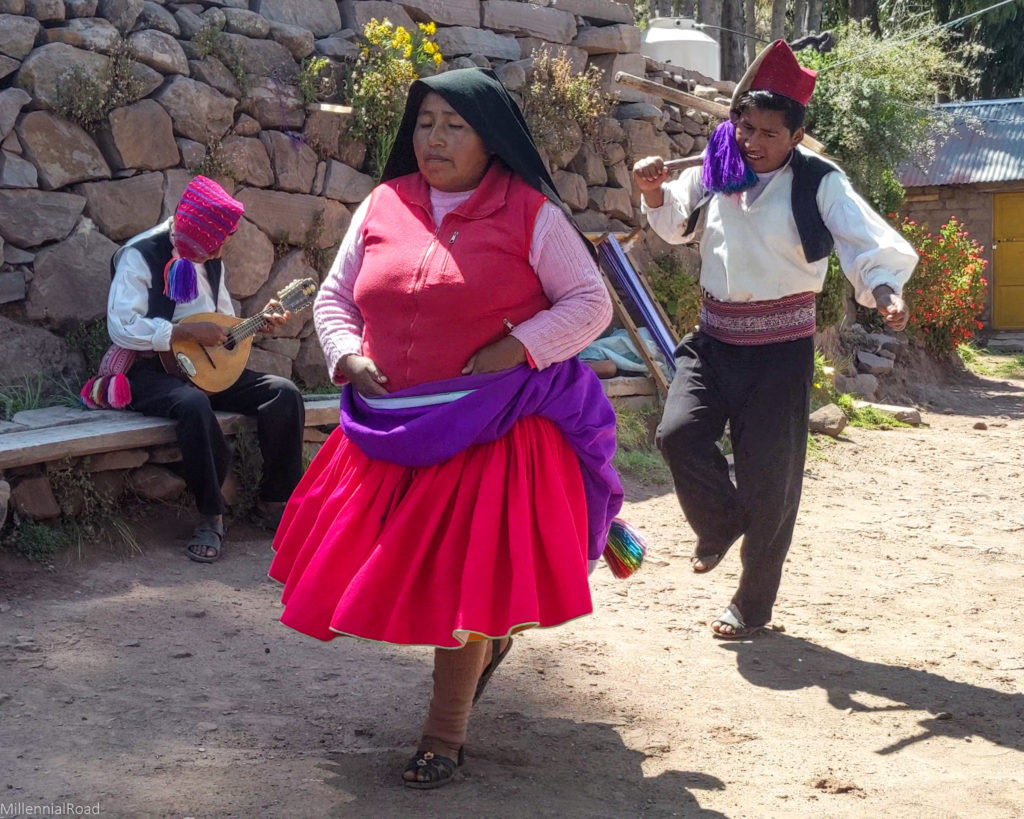
When we reboarded the bus that evening, the tour guide handed me an old, knock-off tablet. My jaw dropped as I noticed that this was not the much nicer, much newer laptop that I had described. Despite being told that my computer would be waiting for me on the bus, it quickly became clear that my laptop had in fact been stolen.
Unfortunately, the bus was leaving so we could join or be left behind. Feeling disappointed, I reminded myself of the villages we experienced earlier in the day and how fortunate I was that my biggest concern at the time was a stolen laptop.
We spent another evening driving overnight and attempting to catch as much shut-eye as possible, but this is no easy feat on a bus driving through South America. At least there was a zero percent chance I would be so tired the following morning that I would leave my computer on the bus!
Arequipa: A different side of the White City
A place where a fascinating but tragic past converges with grandeur architecture nestled in the midst of volcanic geography, it’s no surprise that the historical center of Arequipa has been declared a UNESCO World Heritage Site. Arequipa is also known to many as the “White City,” with the majority of its buildings built from white or pink volcanic rock.
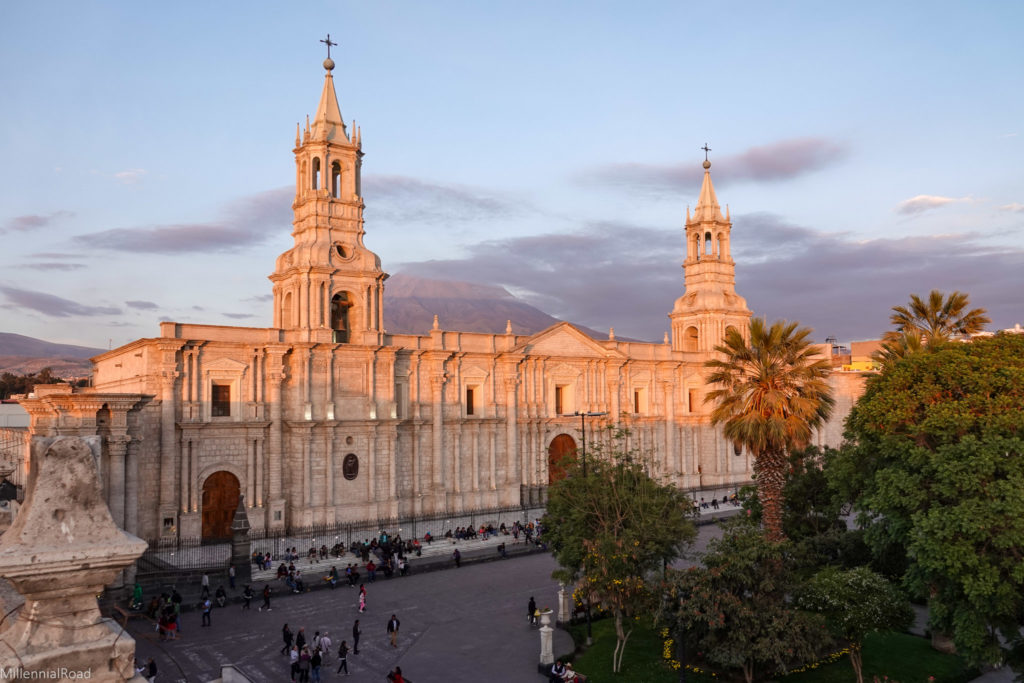
With so much to be seen in this one place, we decided to stay in Arequipa for three nights in total. Our first day in the city was not your typical tourist experience. The most important item on the agenda for the day: filing a police report about my stolen laptop. And if you had any doubt, let me assure you that this was unquestionably a unique and unforgettable experience, to put it mildly.
We walked to the nearest police station, utterly unaware of what it would be like to deal with the police in Peru. With my Spanish skills being mediocre at best and no one speaking English at the station, it wasn’t long before they suggested we talk to the police in the Plaza de Armas, a nearby tourist area.
We found a group of police officers in the plaza, but, again, none of the officers spoke English, making it difficult to tell how much was lost in translation. Before I knew it, they were shoveling us into the back of a police vehicle.
I was (fairly) confident that we had understood each other well enough in the conversation and they were taking us to a police station to take our report. However, the further we drove, the more I started to question whether I had misjudged this situation.
After more than 20 minutes of driving, I began to panic internally. Where were they taking us? What had we gotten ourselves into? I squeezed my husband’s hand and gave him a look of concern. He pressed back, looking at me with reassuring eyes, silently promising that we get through this together and be fine.
The next thing I knew, we pulled up to the police station, where we were met with nothing but kindness. Yet, once again, no one spoke much English.
After a decent amount of confusion, the officer pulled up google translate on his computer. We sat side by side at his desk and began communicating in this manner, taking turns typing questions and responses to one another. We periodically spoke in Spanish, but about 80% of our conversation was through google translate on the officer’s computer.
The entire situation was quite comical, given the circumstances. And eventually, we walked out of the police station with a police report in our hands and a good story in the books.
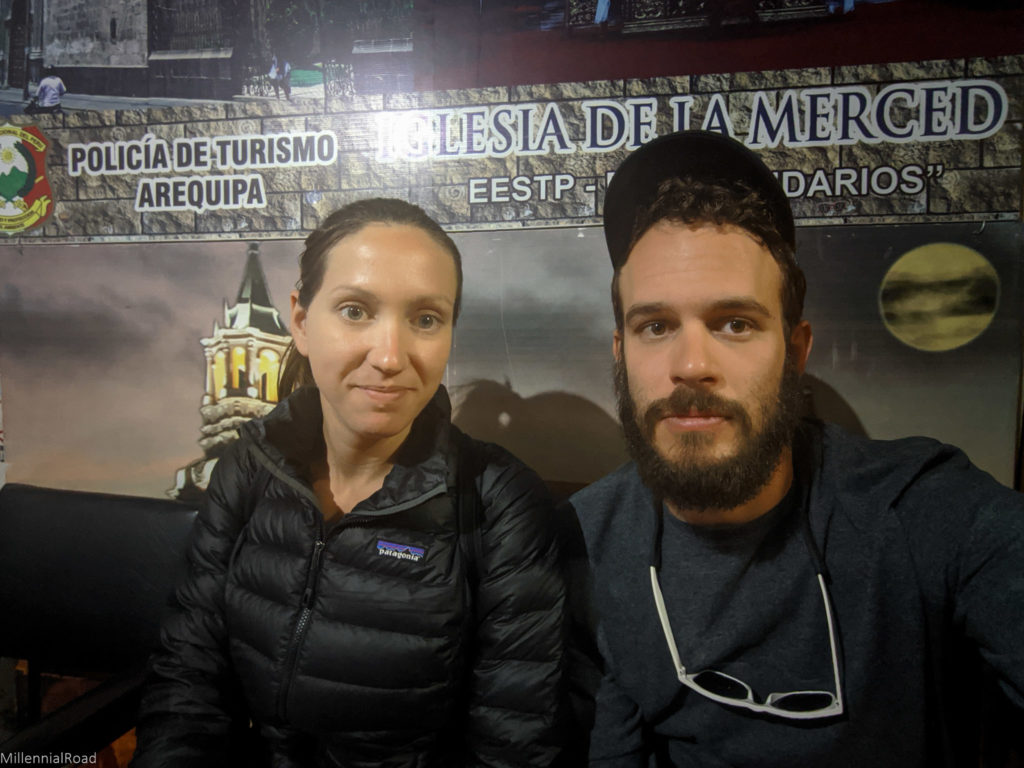
As we often do in a new place, we started our second morning with a walking tour, eager to get acquainted with the city. Arequipa has a fascinating history that cannot be truly appreciated without a local guide.
A bonus of our tour was getting to try Chicha, a popular, traditional Peruvian drink made from corn. This purple-colored beverage was much tastier than I had expected, though certainly a unique flavor.
After the tour, we returned to a chocolateria the guide had shown us named Chaqchao Chocolates, where I discovered the best hot chocolate of my life. I honestly did not know it was possible for hot chocolate to be so rich and decadent. If you are a human and therefore like chocolate, trust me and try this place if you’re in the area.
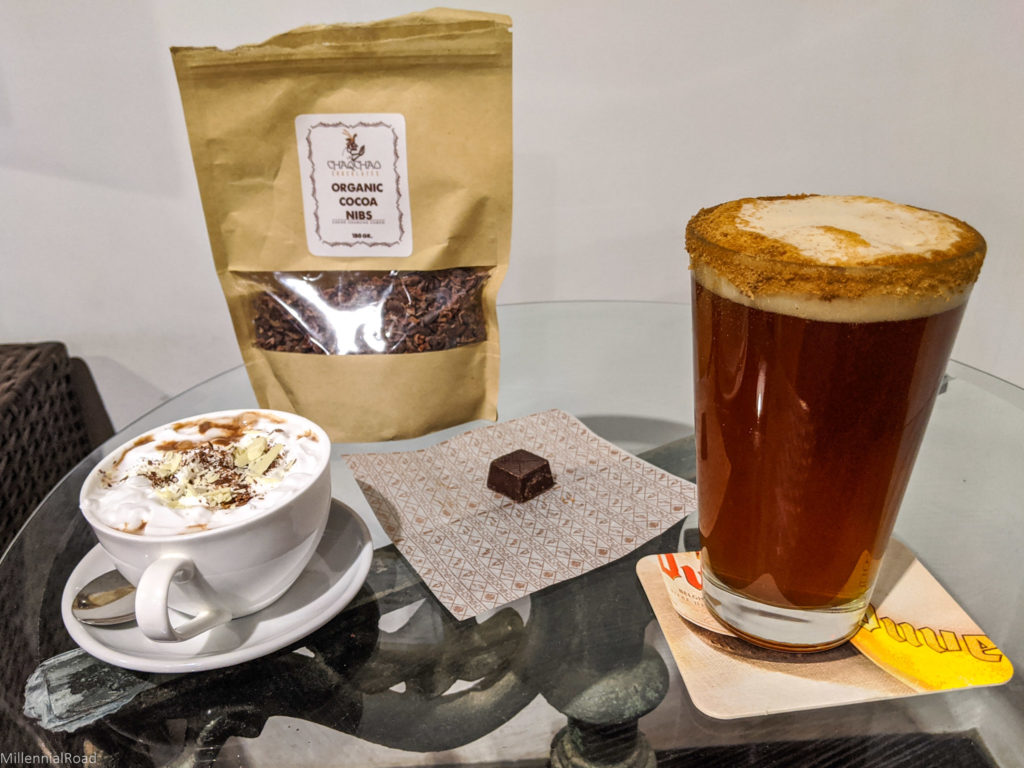
The next day we had lunch at a popular local spot called La Capitana. Being truly local, no one here knew a lick of English and the menu was quite different than anything we’d seen before, so I had a good chance to put my Spanish to the test (a test I passed!). Who could have guessed that having a conversation in another language about food is a lot easier than discussing an unexpected crime?!
We ordered the El Triple con rocoto relleno, and it was unconventional (for a foreigner) but delicious. A pitcher of chicha on the side? Yes, please!
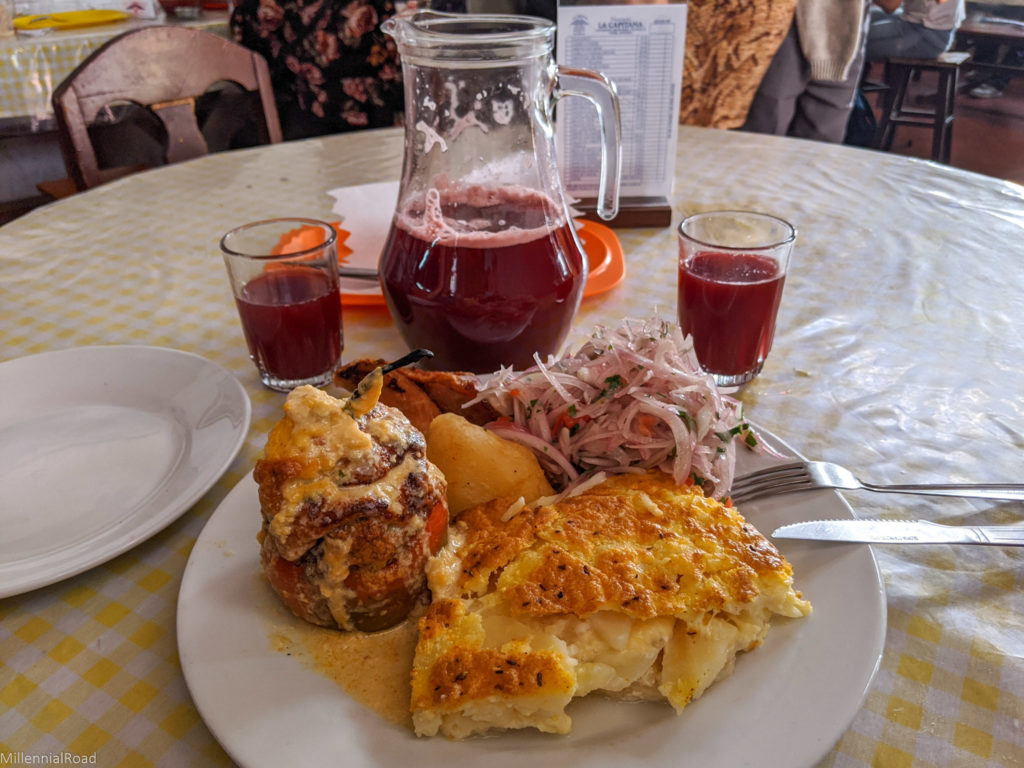
We also went to the local market and bought some coca leaves and Cancha, which is a local roasted corn snack that we fell in love with while in Peru. To skip over these local markets while visiting South America would be such a shame, in my opinion.
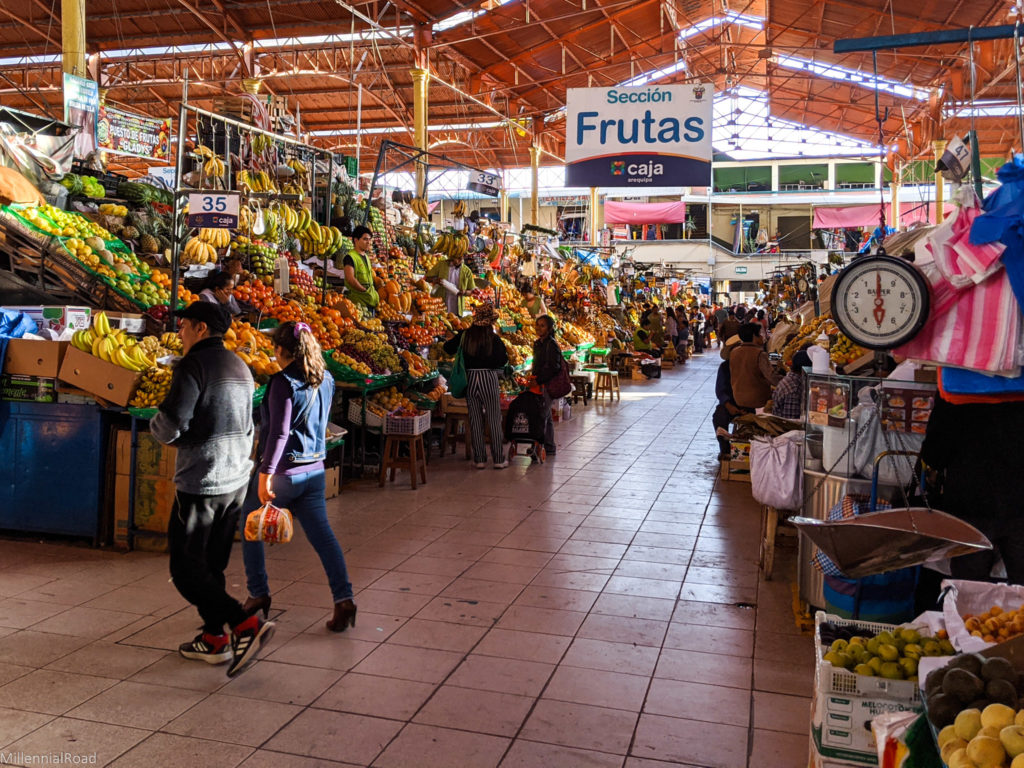
Prepared to learn more about the tragic parts of Arequipa’s history, we went to El Museo Sanctuarios Andinos.
As we walked through exhibits showing the Incan sacrifices of young boys and girls, my heart broke for these children and their families. The Inca people would hike these young children up to volcanoes to sacrifice them to the gods, believing that this would keep their people safe from eruptions.
As we neared the end of the tour, we reached a well-preserved mummy corpse of a 12-year old girl named Juanita, making these shocking human sacrifices become all the more real. While Juanita was the only mummy displayed at the museum, she was just one child among many who were sacrificed. I cannot even imagine the pain and fear these children must have felt during the final days of this treacherous journey and their lives.
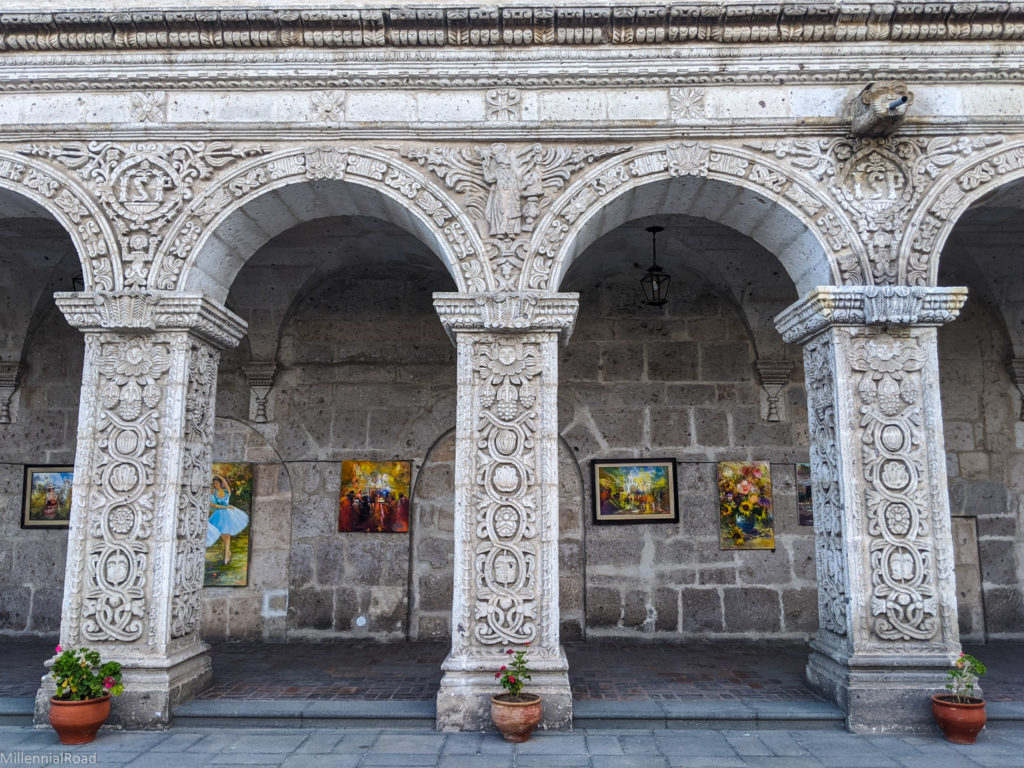
Our time in Arequipa was wrapping up, but there was one more surprise left for us—Nick and I ended up getting bed bugs on our final night in the city.
And if you’ve never endured bed bug bites, trust me that it is not pleasant. You may not feel them when they’re biting you, but they are probably the worst type of bite I’ve ever experienced from an itchiness perspective.
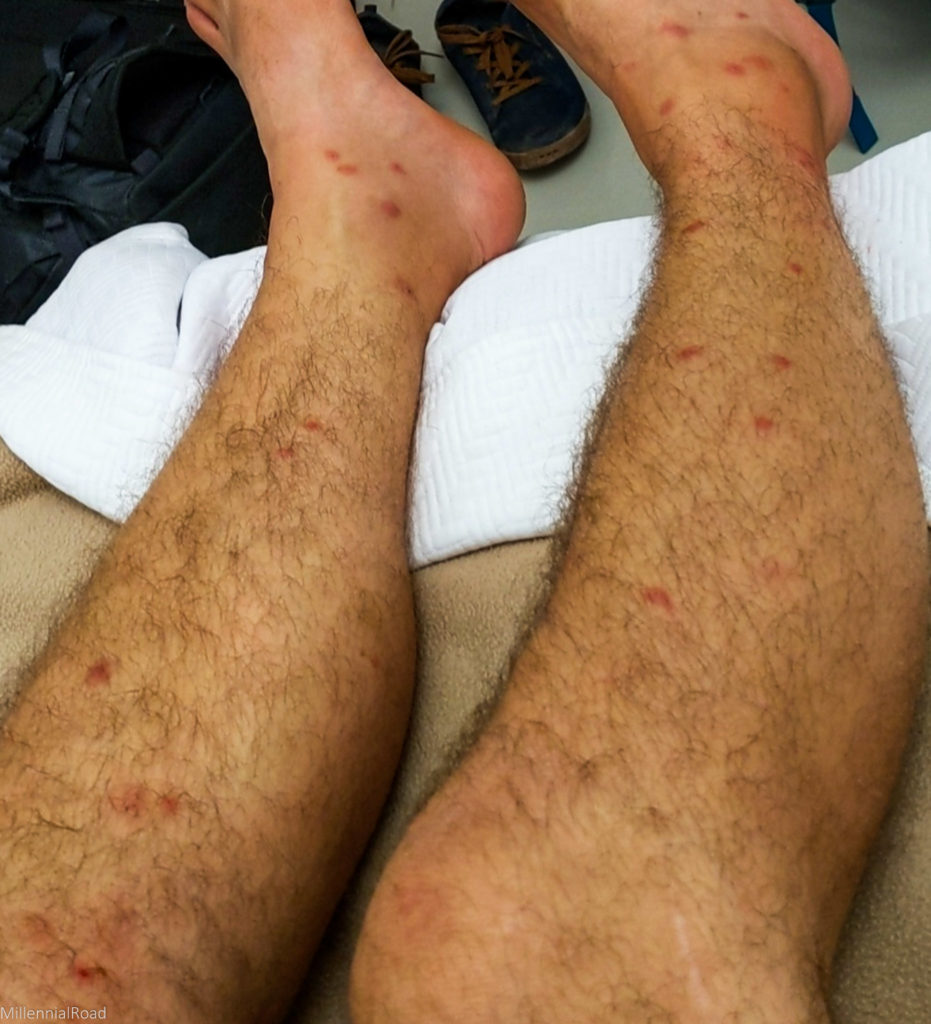
Nick had over 40 bites between both legs. I only had about six bites in total, but my right ankle was so swollen that it looked like I was storing a baseball inside of it. And that is not an exaggeration.
And on that note, it was time to leave Arequipa and move on to the next place.
Nazca Lines
As we made our way to Huacachina the next morning, we took a brief detour to a viewing tower overlooking the Nazca lines, another UNESCO World Heritage Site.
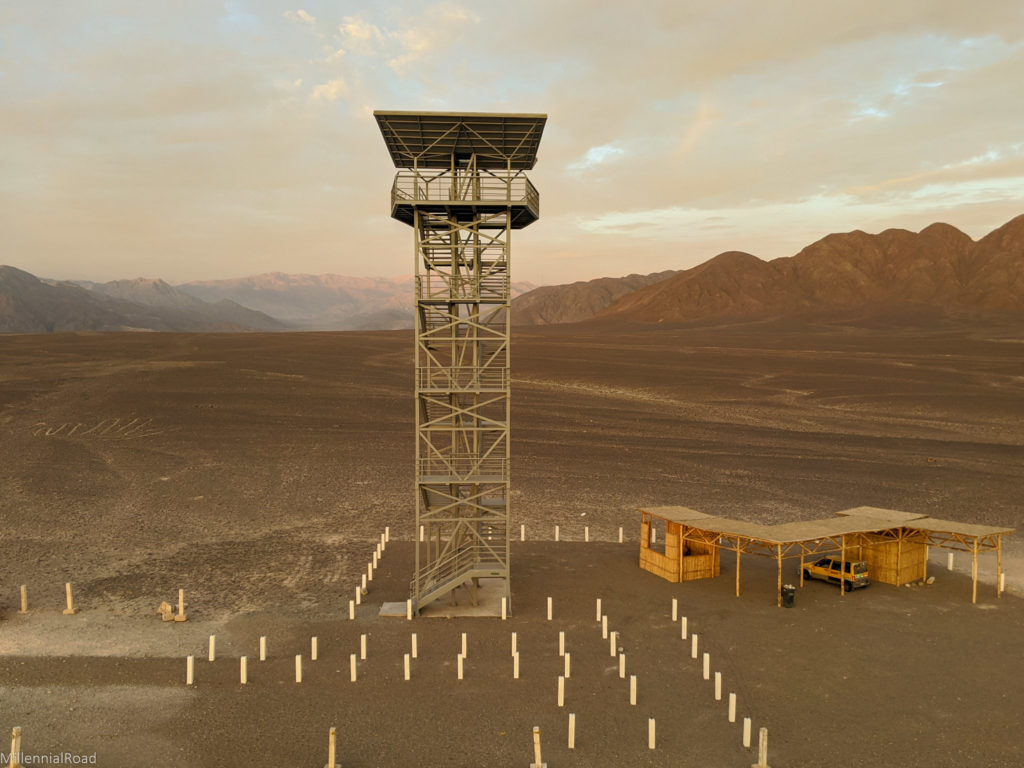
One winding set of stairs later, we were looking down at three different sets of ancient line drawings. Seeing just a small piece of this extensive collection of 2,000-year-old geoglyphs leaves one wondering about the purpose of these symbols, which still remains up for debate.
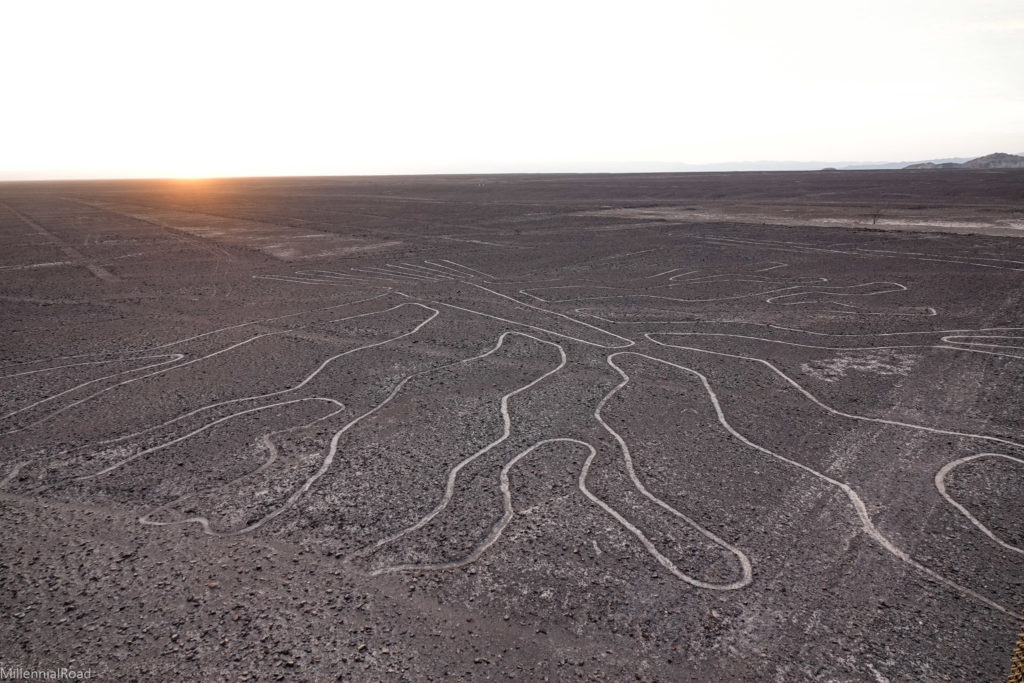
While the Nazca lines are unquestionably impressive due to their scale and age alone, I also found them a bit underwhelming, in my personal opinion.
In order to be able to truly appreciate the magnitude and extent of these ancient etchings, I suspect it would be better to view them from a plane instead. That being said, I would not pass up the chance to see them so cheaply and easily if you are taking this route.
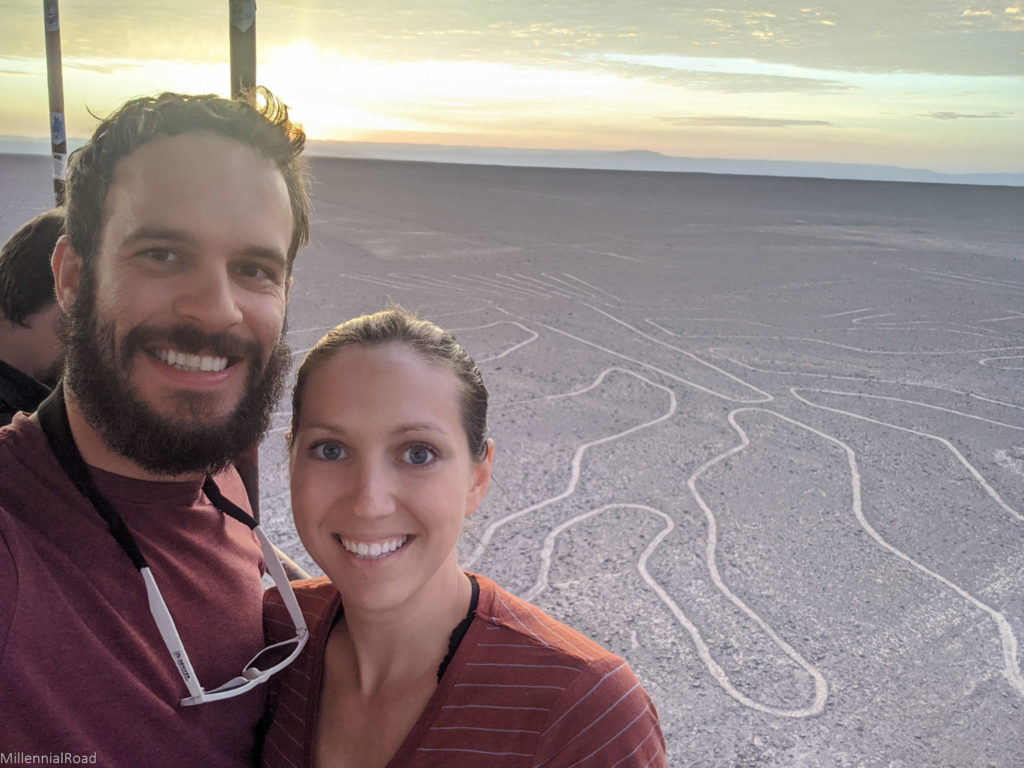
Huacachina: An oasis in the desert
Once we arrived in the small, desert town of Huacachina, it didn’t take long to realize that this would be a distinctly unique experience from the prior few days.
The village can be found a few hours south of Lima, where rolling sand dunes surround a small oasis encircled by towering palm trees. This small lagoon, which is the only natural desert oasis in South America, is believed by some to have special healing properties.
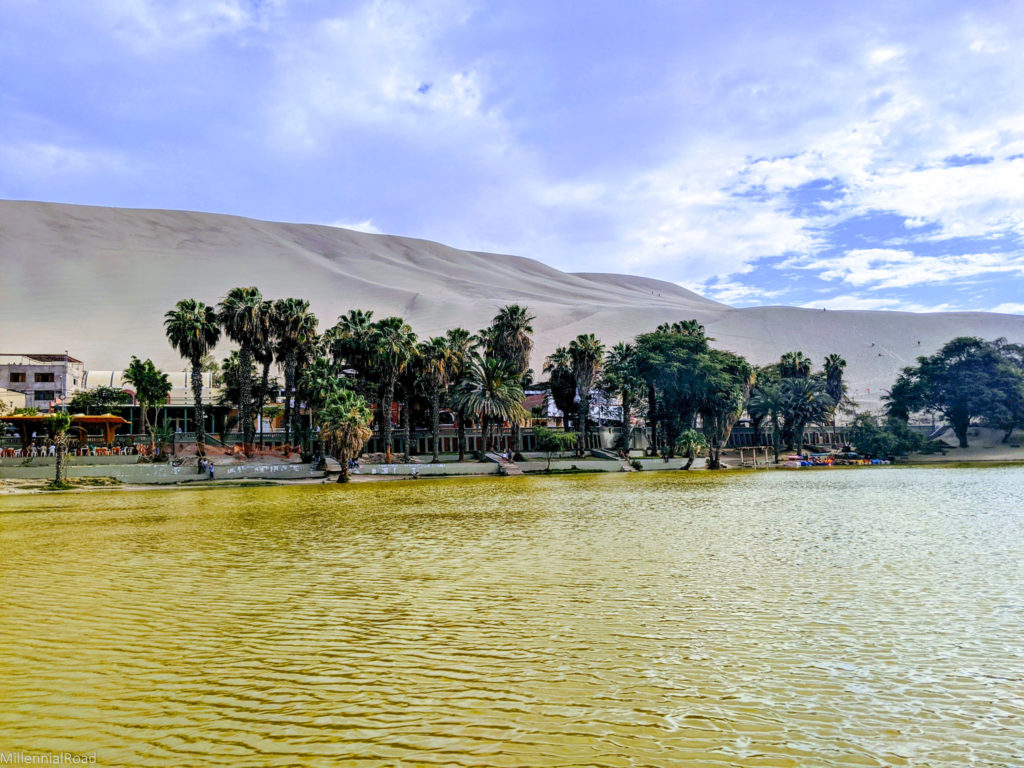
The first thing you’ll notice when arriving in Huacachina is that it is clearly a tourist town, but do not let that deter you from the unique experiences available here. Fully embracing the tourist experience, we decided to stay at a hostel called Wild Rover, which had a reputation for living up to its name and being a bit wild.
Being in our early thirties, we were older than the majority of the people staying at the hostel. But with age comes experience…in beer pong.
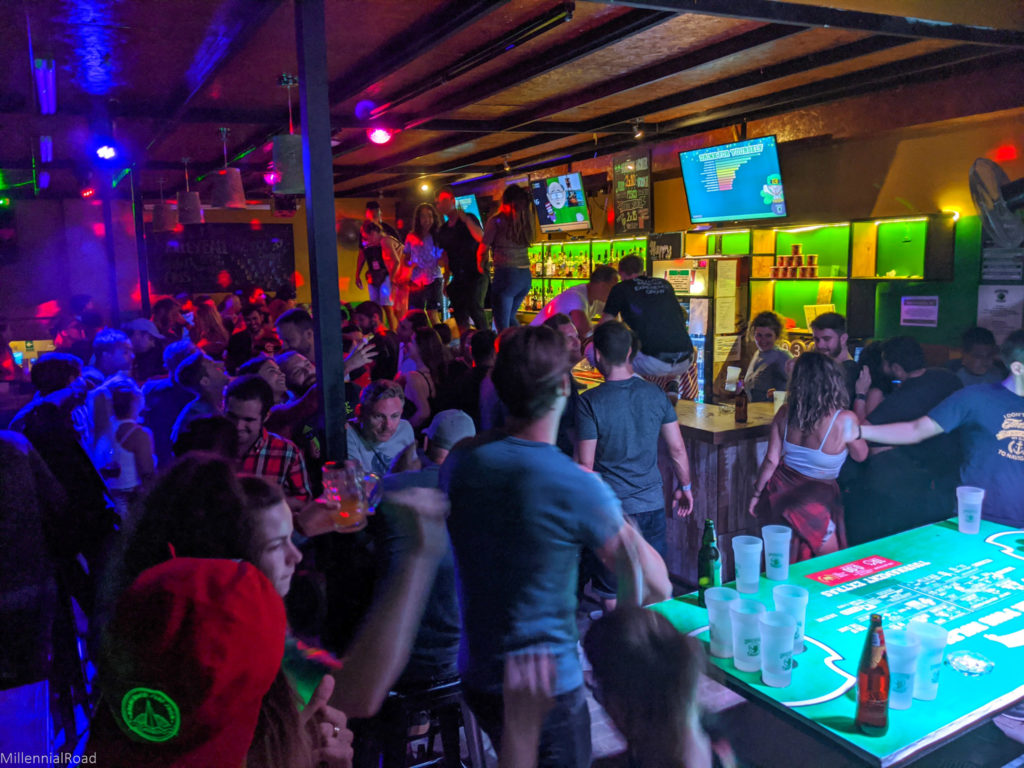
Party hostel aside, I cannot say enough good things about Huacachina. To begin our day, we took a quick trip over to the nearby city of Ica to visit Bodega El Catador, a popular, locally-run bodega where you can taste some of the region’s finest pisco.
The tour was enjoyable, but I must admit my favorite part was the pisco tasting. We tried quite a few different types of pisco, each completely different from the prior. I honestly enjoyed all of them.
During our time in Peru, we had fallen in love with two of the country’s most classic pisco beverages—the pisco sour and the chilcano—but I could drink pisco straight if it tasted as good as the versions we tried at this vineyard.
After the pisco tour, we went sandboarding in the nearby dunes. We chose the more adventurous option of standing up while riding down the dunes, which required a snowboard and boots.
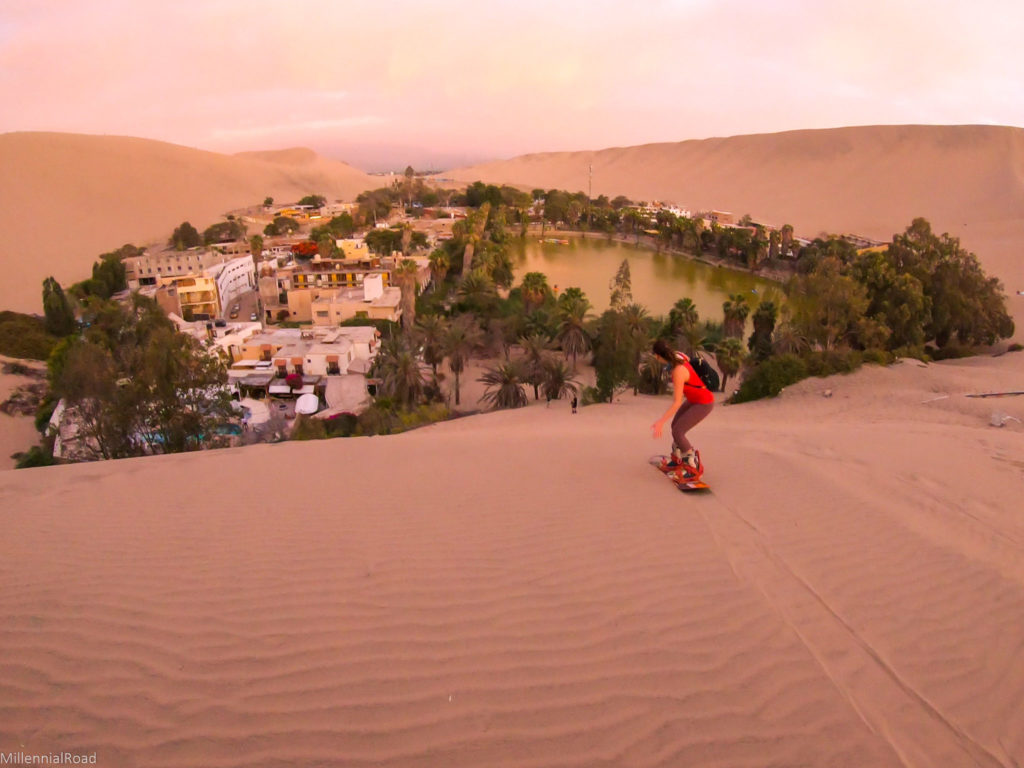
It was more challenging than I expected at first, requiring a somewhat different skill set than snowboarding. I wiped out quite a bit the first few tries. But, by the end of the day, I felt like I had the hang of it and wasn’t ready to stop. Nick, of course, did much better than me from the start.
Anyone who is not comfortable standing can rent a cheaper board and ride it like a sled, laying on their stomach as they slide downwards. Most people in our group chose that option and all seemed to have a blast. While it may have happened less often, that did not stop them from flying off the boards and getting a face full of sand.
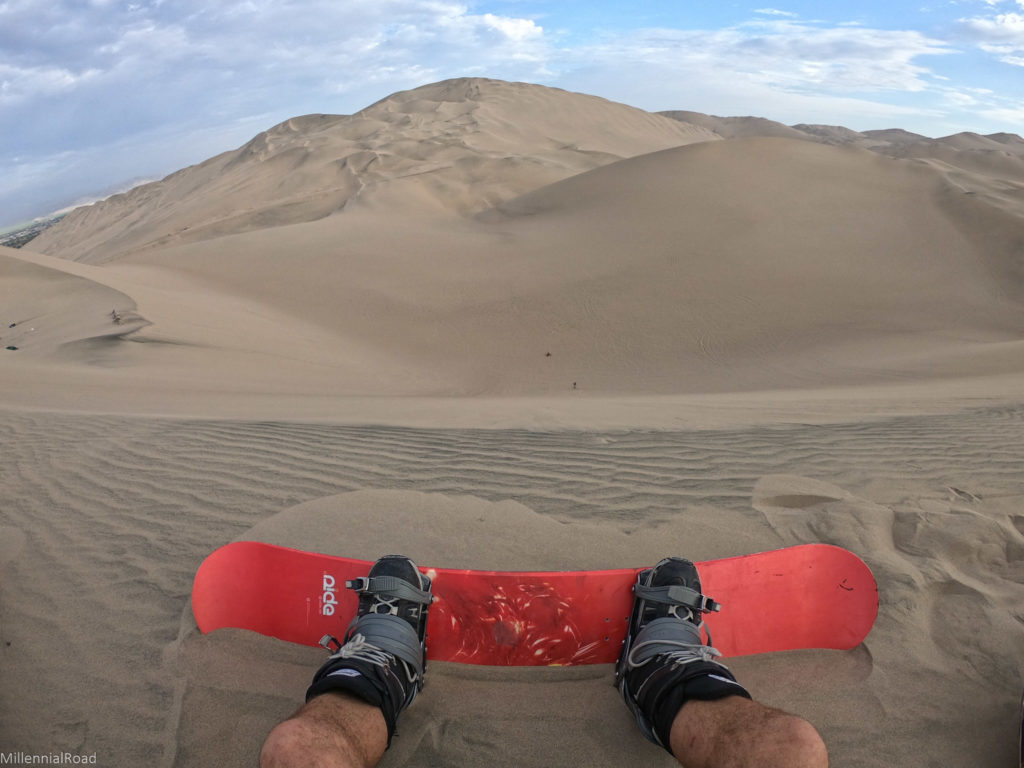
As much fun as we had sandboarding, our favorite part might have been driving in the dune buggy through the sand dunes.
Our driver was crazy and was going much faster than I would have ever felt comfortable. Our entire buggy squealed giddily as we flew over dunes and drifted around bends.
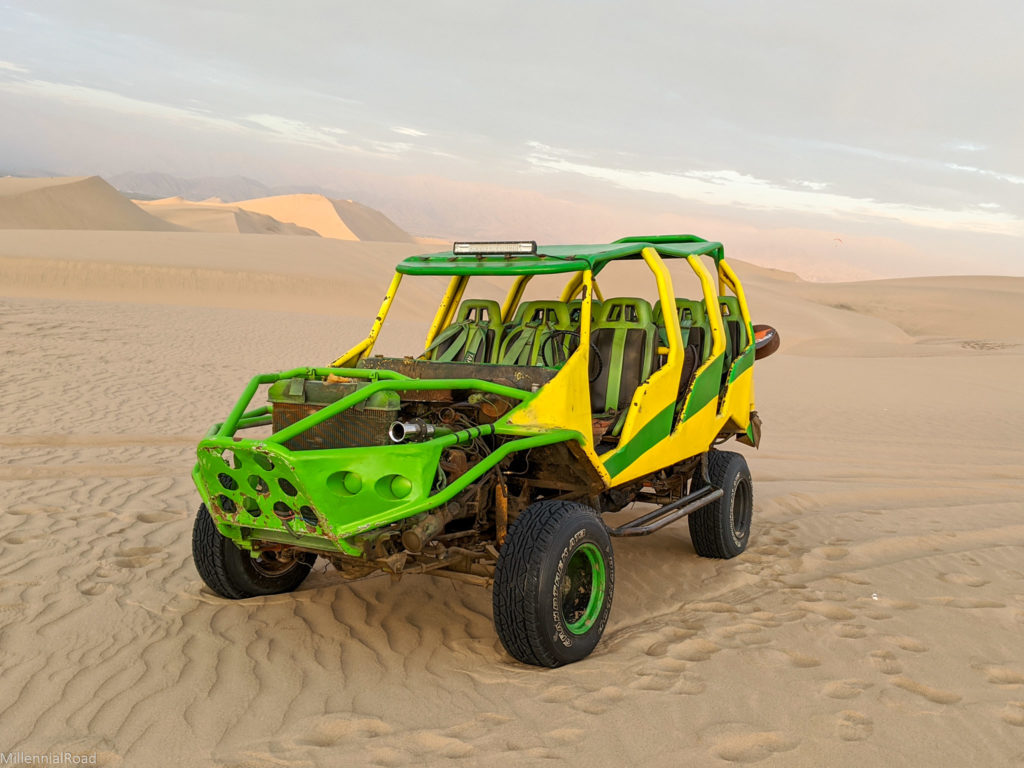
I find it hard to believe that the driver had complete control of the vehicle at all times, but he did a great job.
Every single person in the buggy was laughing and screaming nearly the entire time. And if that isn’t a measure of a good time, then I don’t know what is.
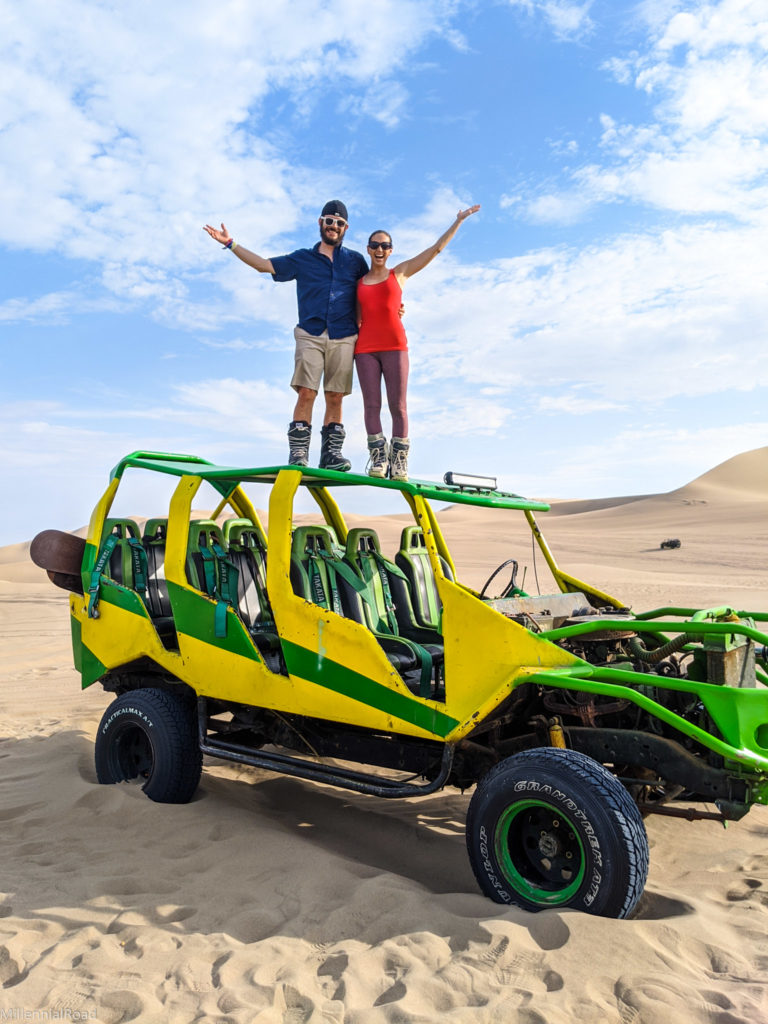
Paracas to Lima
Although I could have spent much more time in Huacachina, it was time to make our way to Paracas. After a week of cheap hostels, one of which left us with bed bug bites, it was a welcome change of pace to stay in a more luxurious hotel.
One of the main reasons to visit Paracas is to see the Ballestas Islands, a group of islands off the coast of Paracas also known as the “Poor Man’s Galápagos.”
If you’ve read elsewhere on this website, you may already know that the Galápagos Islands are one of my favorite places in the entire world. So, naturally, visiting the Ballestas Islands is the first thing we did when we arrived in Paracas.
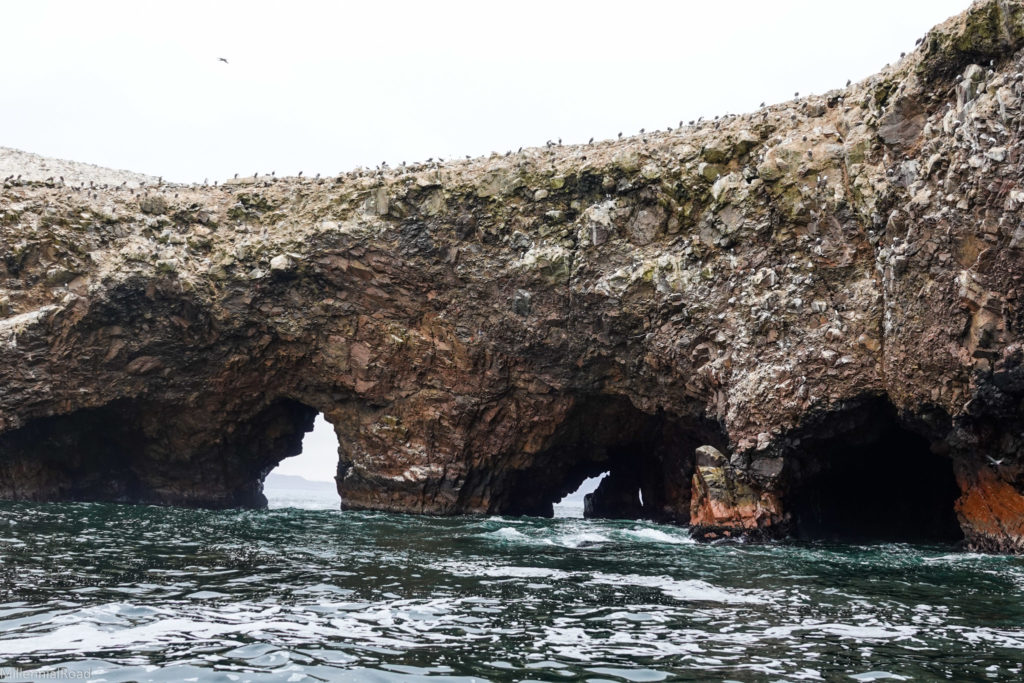
I would not say that the Ballestas Islands are comparable to the Galápagos Islands, but they certainly provide a taste of what you might experience in the Galápagos (and for MUCH cheaper). The islands are protected, so visitors cannot disembark the boat to swim or step onto the land. However, the boats get surprisingly close to the islands, allowing for clear views of the wildlife.
An abundance of sea lions, penguins and other birds can be spotted on the islands. My eyes were immediately drawn to the Humboldt penguins scattered across the jagged boulders that protruded from the sea.
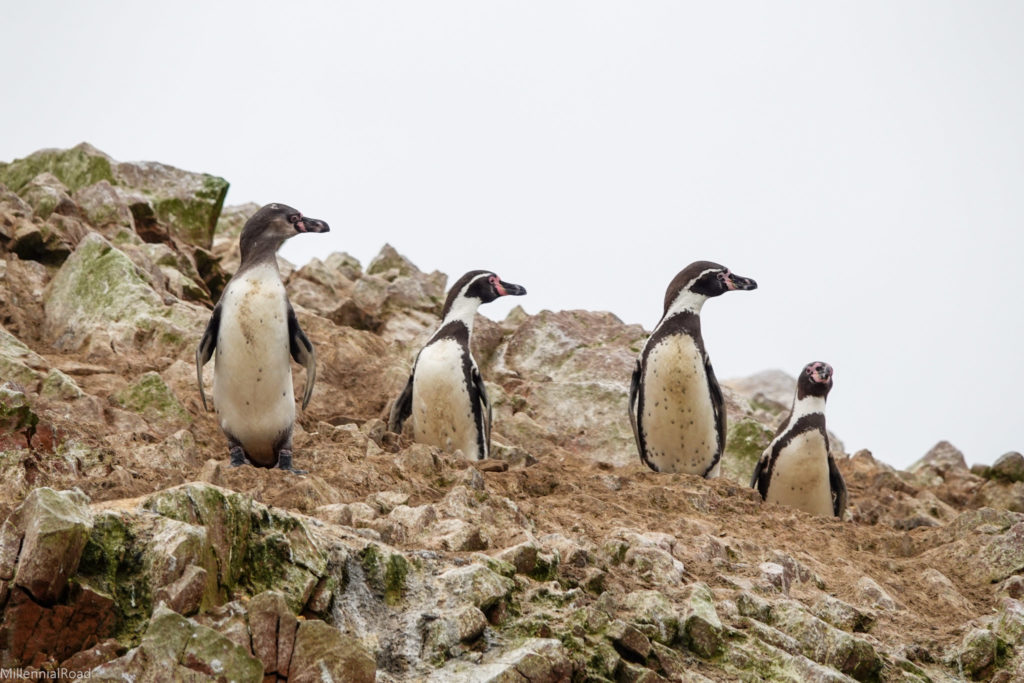
Similar to the Galápagos penguin, the Humboldt penguin is adorably tiny, weighing only 8-13 pounds and measuring 22-28 inches long. My face nearly hurt from smiling so much as I watched these charming, miniature waddlers stumble over and across the cliffs in their fancy tuxedos.
Sea lions stretched out across the rocks, basking in the warmth of the sunlight. Watching the younger sea lions attempt to climb out of the water and onto the rocky boulders was one of the most entertaining sights of the entire experience for me.
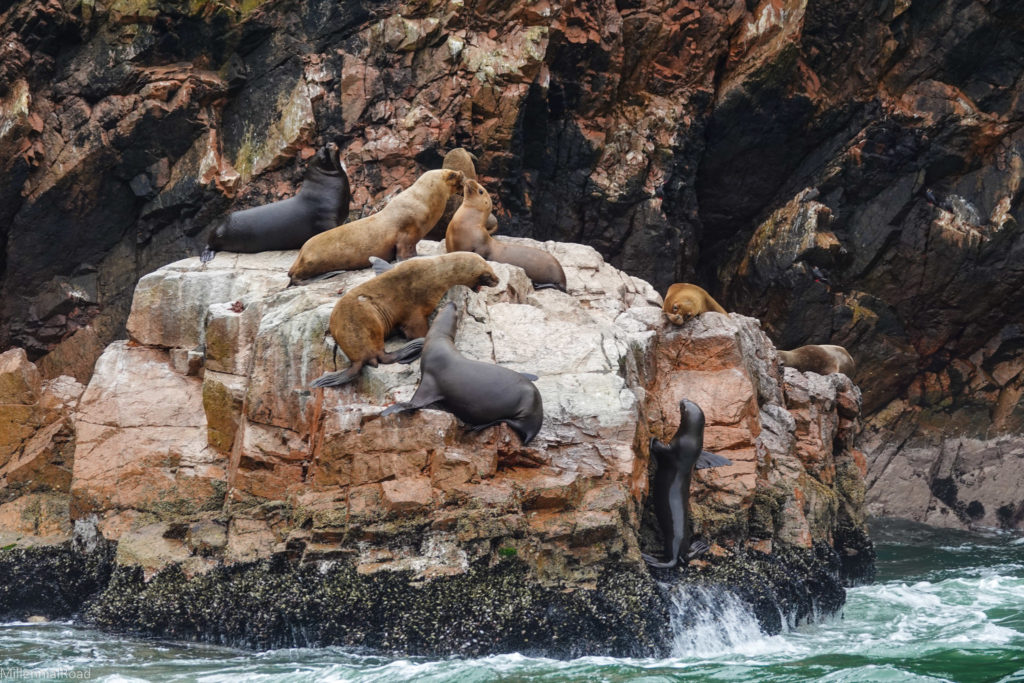
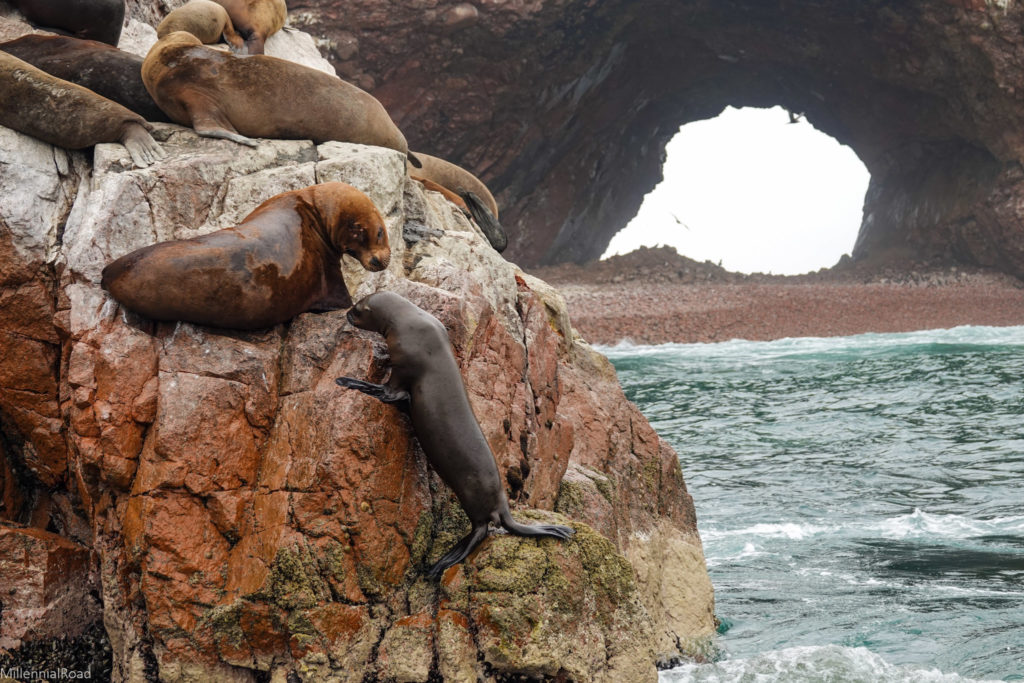
Cormorants, pelicans, boobies, and countless other sea birds lined the cliffs and filled the air around us. There was certainly no shortage of life or entertainment during this brief visit.
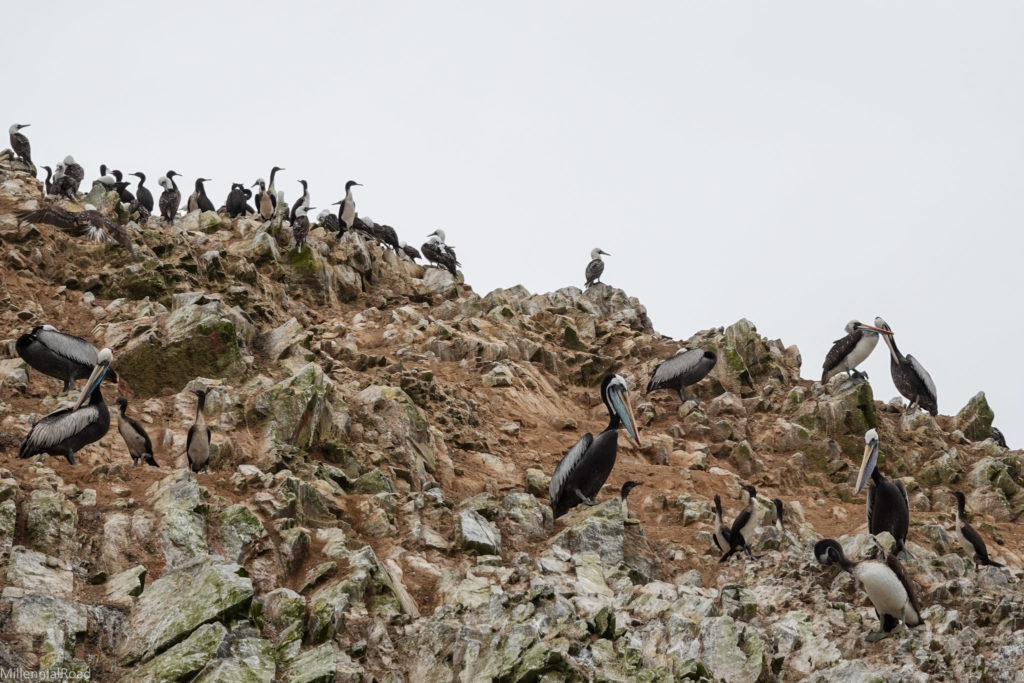
Paracas itself, which exudes a small town beach vibe, is worth spending some time exploring as well. A strip of charming, coastal restaurants and bars line the beachfront. Being a popular tourist area, we were even able to get craft beer there (which is not always an easy feat in South America)!
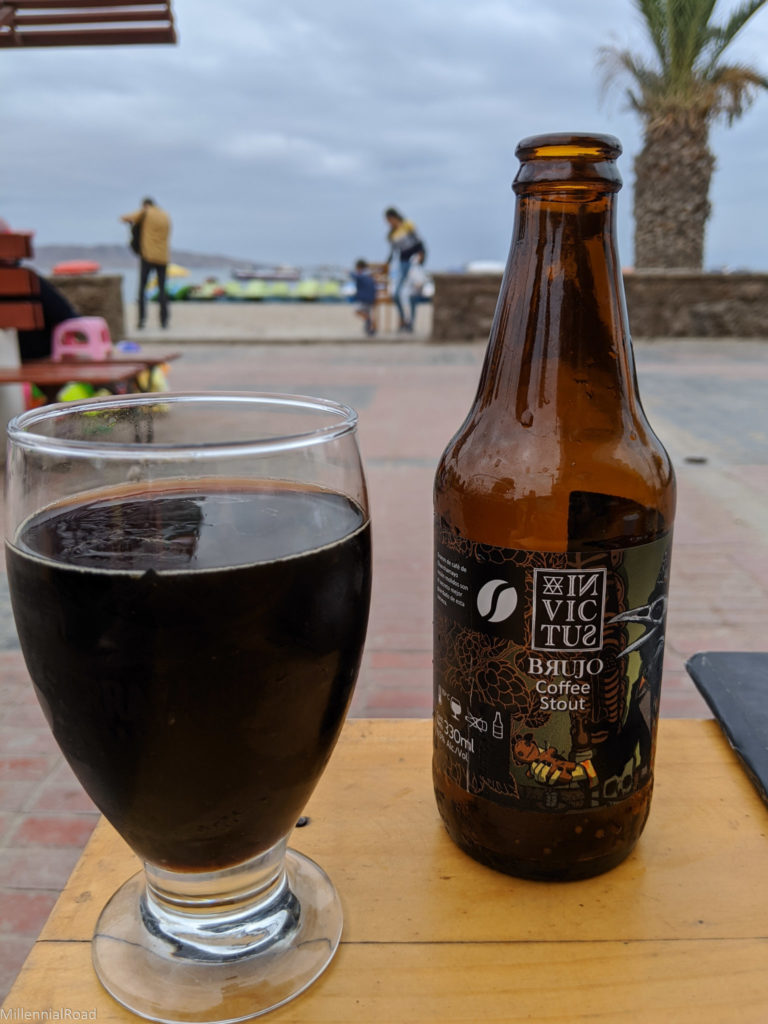
We reluctantly said our goodbyes to Paracas and began the final leg of our journey to Lima the next day, making a stop at Hacienda San Jose along the way. What is now a luxury hotel was once a sugarcane and cotton plantation with a dark history of slavery.
After entering a hidden staircase, our tour guide led us down into a system of underground slave tunnels. As we weaved through the dark passageways with our flashlights illuminating the way, we passed by a pile of human bones.
I fully expected that the subject matter of this tour would be tragic. Still, when you see bones or other similar remnants, the history becomes undeniably real in an almost haunting way during those moments.
As we reboarded the bus to finish our journey, we did so with heavier hearts but a greater appreciation for how fortunate we were to be on this trip.
We didn’t have much time in Lima, but of course, we visited the Plaza de Armas and found time to eat some ceviche, which is a must-do in Lima.
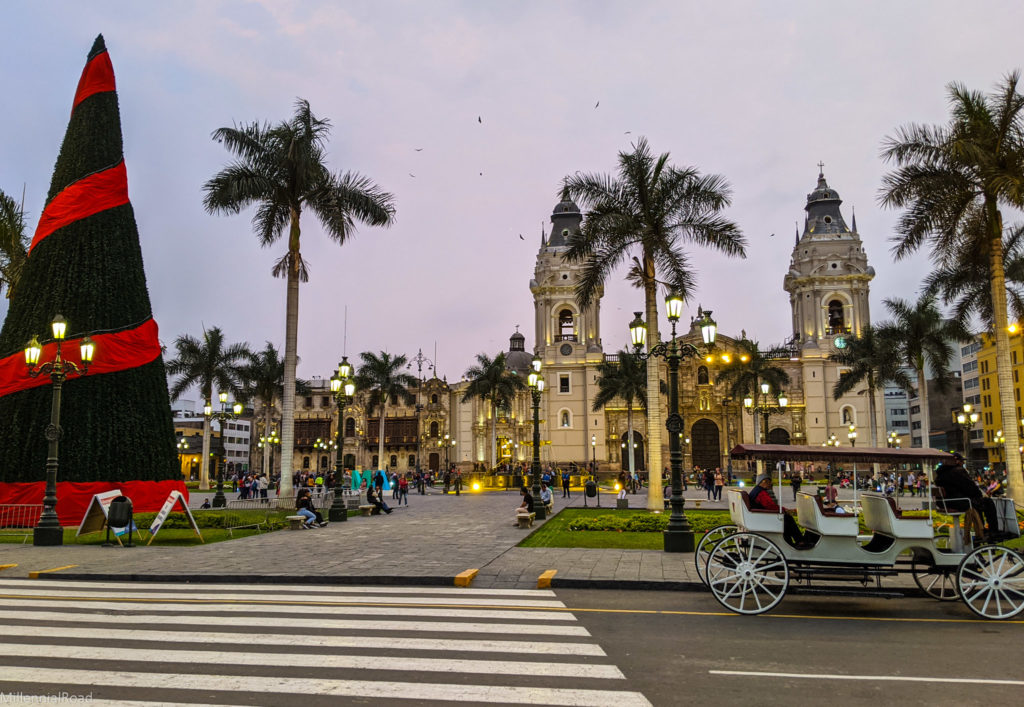
A version of ceviche that cannot be missed in Peru is one using leche de tigre (or tiger’s milk), which is a citrus-based sauce used as the base for the ceviche dish. This popular, local marinade can also be served as a beverage and is believed by some to be a hangover cure.
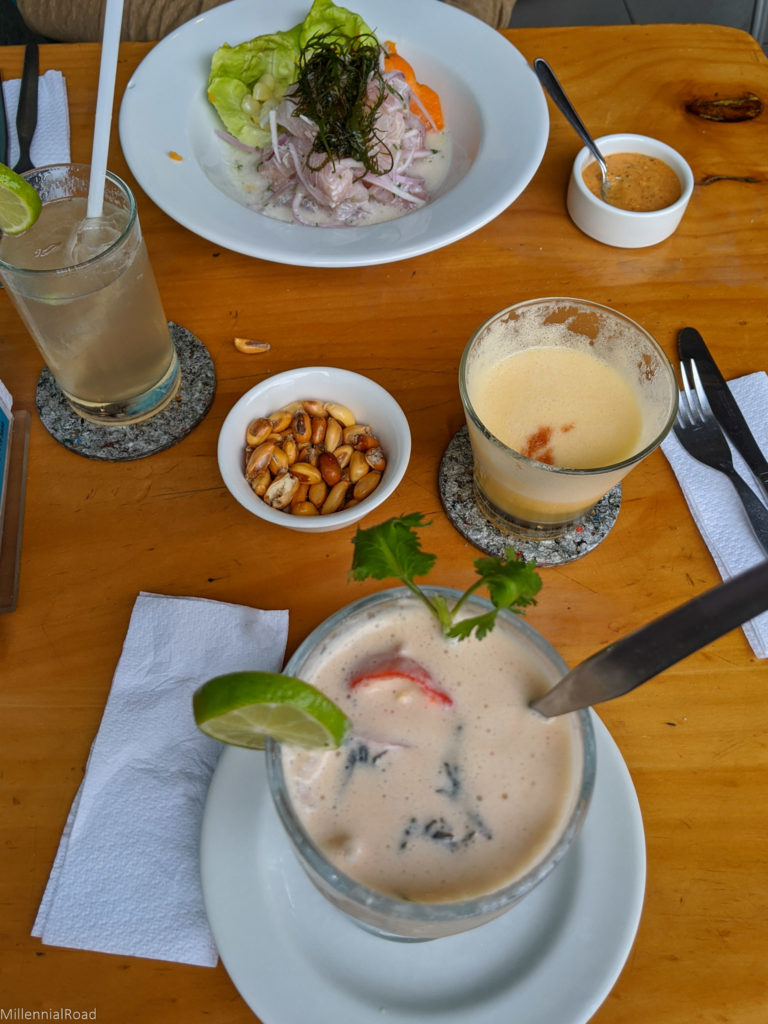
Despite the roller coaster of experiencing theft, multiple Peruvian police stations, and bed bug bites, we’d also had some incredible experiences during the same trip. And we learned a few lessons in the process. I mean, is it even really an adventure without a few mishaps along the way?
Although you may not see me signing up for many more bus tours, I cannot speak highly enough about the destinations visited during this journey. I would absolutely recommend combining several of these locations into the same trip. And if you don’t want to spend time planning, a bus tour is undoubtedly a cheap and easy way to do it. Either way, it’s hard to go wrong with such a variety of activities, cultures and experiences in such a small geographic region.
Continue reading about our adventures as we begin our travels through Chile, exploring the Santiago region and venturing from the mountains to wine country to the beach!
If you missed it, go back and read about our experience at Skylodge Adventure Suites, where we climbed 400 meters up the side of a cliff to sleep in a transparent capsule overlooking the Sacred Valley of Cuzco.

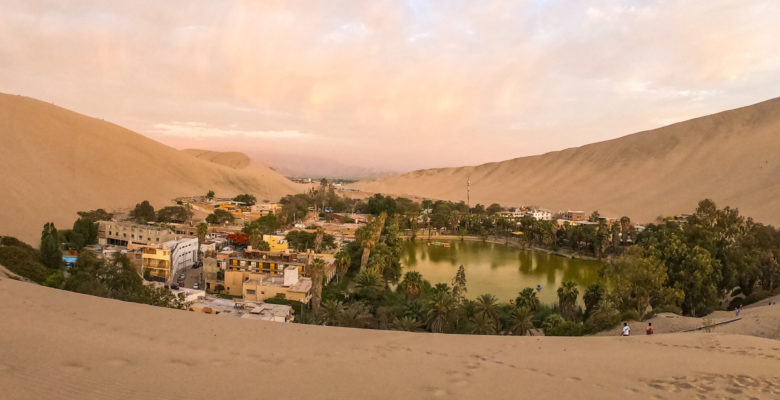
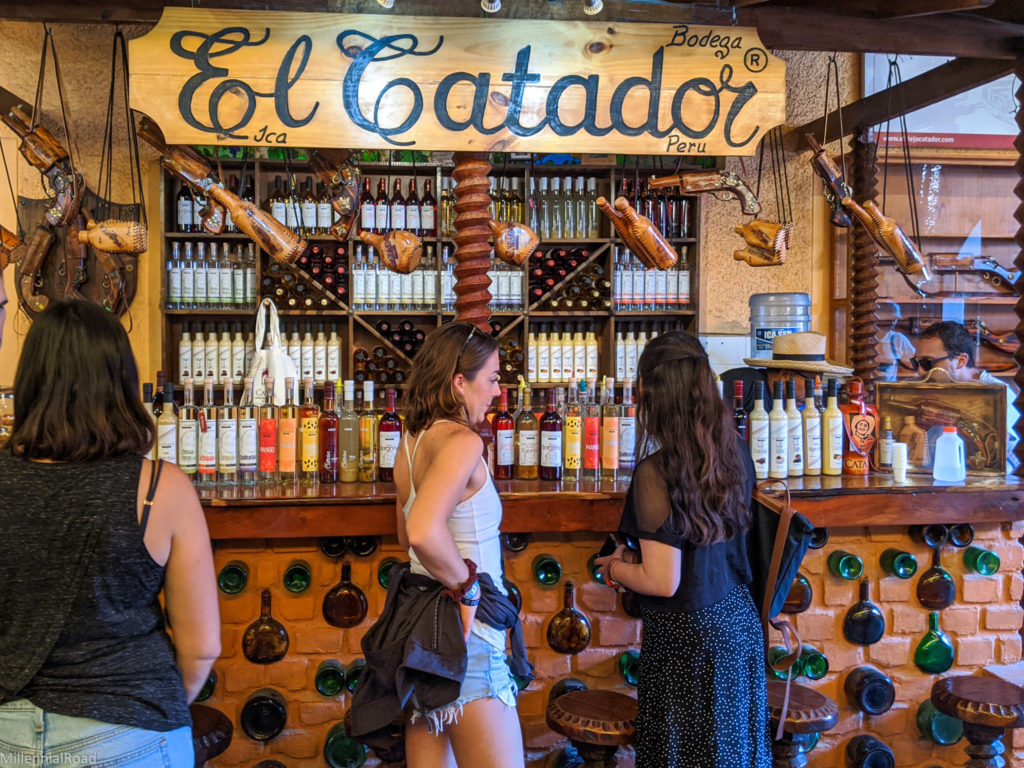
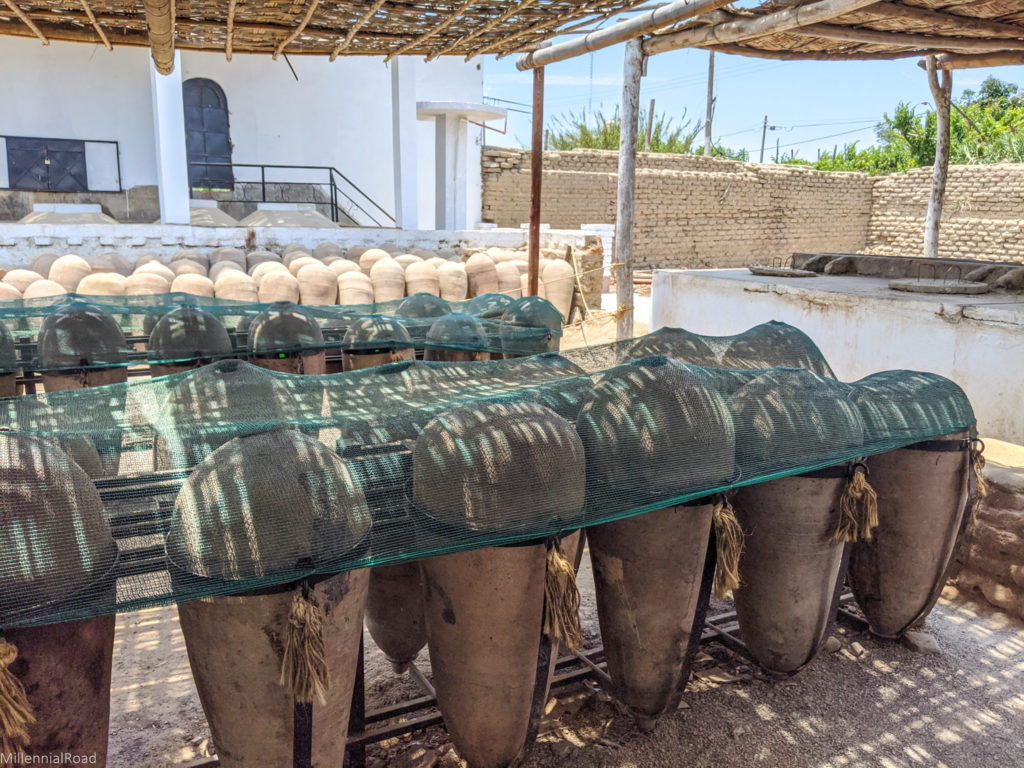
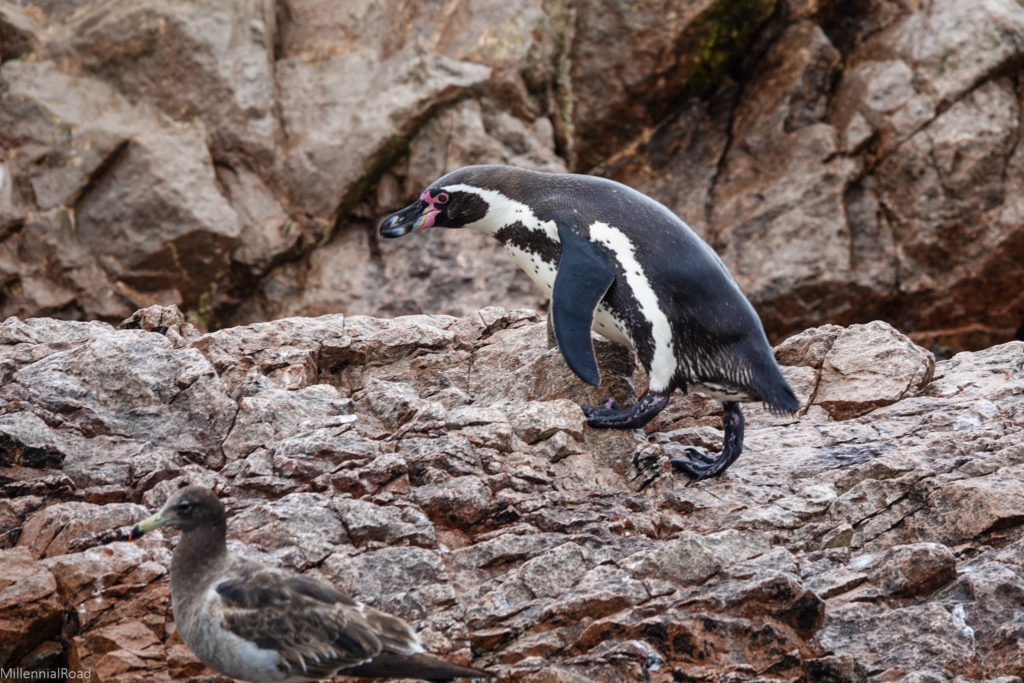

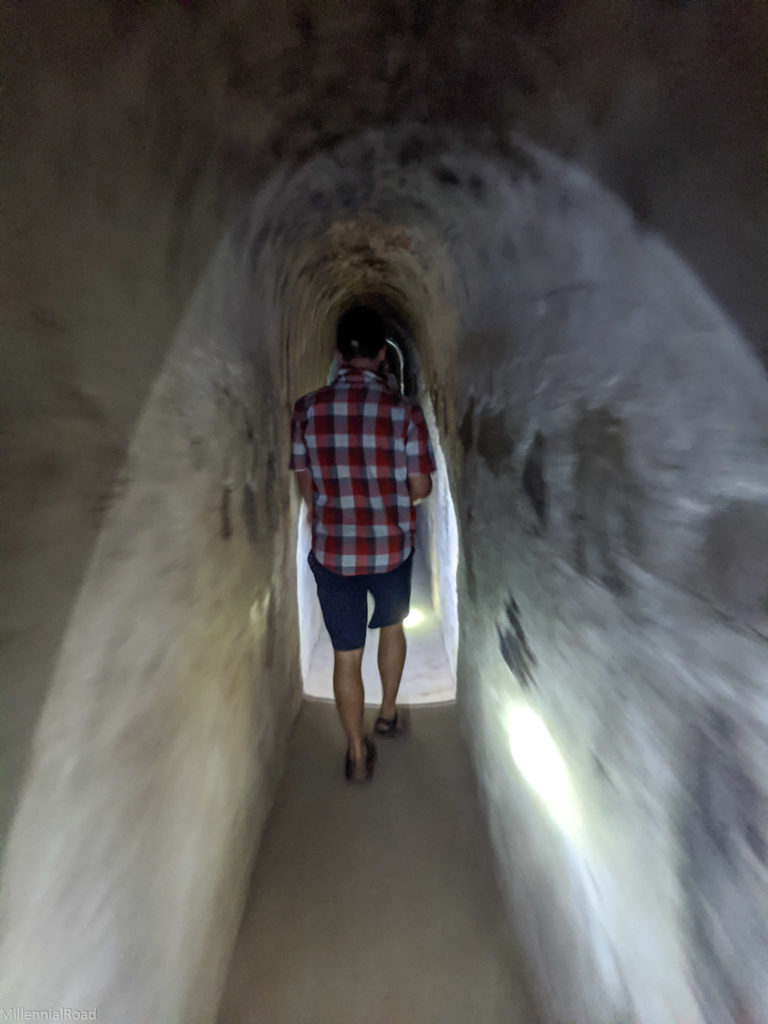
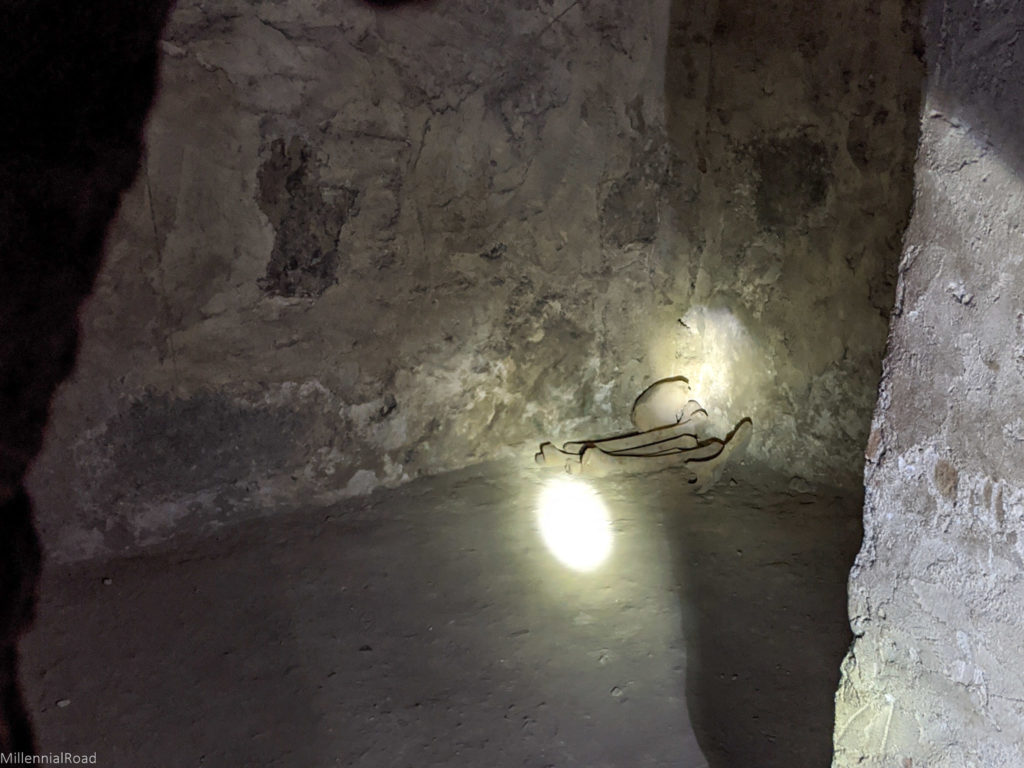
Leave a Reply